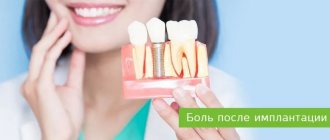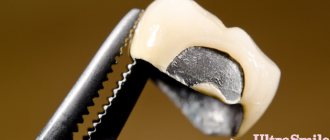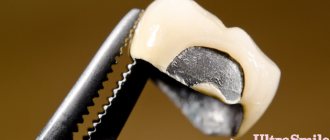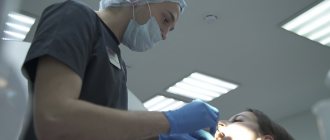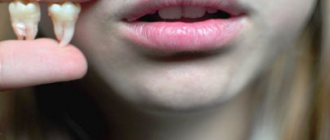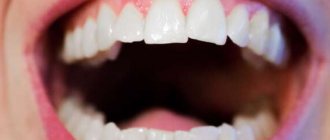05.11.2019
Every person experiences pain while in the dental chair. Most people then become afraid of going to the dentist. Therefore, anesthesia for tooth extraction is a common procedure. The use of painkillers relates to surgical operations, but not on a large scale.
To quickly and painlessly cure or remove a tooth, you need to choose the right anesthesia. Today there are a large number of painkillers. They have been so improved that a person does not feel any pain.
Anesthesia methods
Anesthesia can be local or general. The local form is divided into external and injection methods.
The external method allows you to anesthetize superficial tissues using medicinal substances. These can be special ointments, gels, devices with electromagnetic waves, simply applications. The last method is used most often. The application is a cooling plate. It is applied to the gums, and the patient does not feel pain. This method is usually used to remove baby teeth in children.
The injection method involves injecting an anesthetic substance through a needle.
There are 4 types of anesthesia:
- Conductor. The method allows you to anesthetize several teeth at once. An anesthetic is injected into the area of the last tooth where the branch of the nerve is affected, resulting in blockage of the entire nerve.
- Infiltration. An anesthetic substance is injected into the projection area of the apex of the tooth root.
- Intraligamentous. The medicine is administered through the gum. As a result, the tooth and the surrounding gum area are numbed. For this method, a special syringe with a dispenser is used. It allows you to administer a minimum of anesthetic substance.
- Intraosseous. It is the best anesthesia. In this case, the injection is made directly into the spongy bone. It is she who covers the dental alveoli.
General anesthesia (anesthesia) is done very rarely.
It should not be used for people who have heart problems. This method of anesthesia is used only in the most difficult cases. Dentistry must be equipped with a special office and all the necessary equipment. And also during surgical operations, the presence of an anesthesiologist next to the patient is mandatory.
Only the doctor decides which anesthesia is best for tooth extraction. Everything will depend on the complexity of the procedures and the general condition of the tooth.
Frequently asked questions to the doctor
Duration of anesthesia
Hello, I would like to know how long it takes for the frost to go away after dental treatment?
How long it takes for a frozen tooth to go away depends on what type of drug was used, namely:
- Medicines injected into the gum or cheek area act for a few minutes.
- An anesthetic injected into the upper jaw lasts up to three hours. Everything will depend on the individual characteristics of the patient.
- The anesthetic should be injected into the lower jaw as deeply as possible. Because of this, it is eliminated more slowly and lasts up to four hours, and sometimes longer.
The duration of action of the drug is different for each person, everything is determined by the characteristics of his body. But if you feel that things are not going away for a day or more, then of course you should consult a doctor.
Toothache
Hello, I haven’t been able to sleep properly for several days now, the whole point is that the tooth has darkened a little, it hurts and reacts to hot things. I already had it filled several years ago, tell me, what should I do now?
A reaction to hot drinks is evidence that the nerve is inflamed; you need to visit a dentist. An x-ray should be taken, after which a treatment plan will be selected.
Feasibility of treatment
I have a small hole in my tooth, tell me, is it possible not to treat it for now?
The most important thing in your case is to visit the hospital as soon as possible and begin treatment. A small hole can cause even more problems than a large one. There is no need to be afraid of the procedures; they are performed under anesthesia, there will be no pain.
Frequency of dental visits
I have a growing daughter, how often should we go to the dentist for a checkup?
It is generally accepted that you need to take your child to the dentist at least once every three months. But why so often? The thing is that a child’s baby teeth are less mineralized, which means they are much more likely to suffer from caries. These teeth have thin walls; after infection, it takes several months for them to completely collapse. By visiting your dentist regularly, you can prevent the development of any diseases.
Basic painkillers
Not any anesthesia can be used when extracting a tooth. In dentistry, only the most common and effective medications are used. And almost every hospital has Novocaine.
But in modern treatment, novocaine is used much less frequently. If previously not a single operation could be done without it, now this drug causes an allergic reaction in most people. It has a number of side effects:
- dizziness;
- lethargy;
- lowering blood pressure.
Today there are more intense anesthetics, and therefore novocaine is used only in combination. It is injected into the body with a small dose of adrenaline. In combination, these drugs have the best analgesic functions. But such a mixture should not be prescribed to people whose blood pressure is off the charts.
For infiltration anesthesia, a 0.5% lidocaine solution is used. This drug can be used for the conduction method; only a 1–2% solution is required. For an adult, the norm is 300–400 mg. Side effects of this medicine include:
- headache;
- fatigue;
- loss of sensation in the lips and tongue;
- heart rhythm is disturbed;
- blood pressure decreases;
- there may be hives.
The most modern anesthesia is a medicine based on the substance articaine. Such drugs can provide long-term and reliable pain relief. It is used by a large number of dental surgeons. The substance reaches its maximum effect after 10 minutes and maintains its result for 1–3.5 hours. But no matter how good the drug is, it always has side effects:
- muscle twitching;
- headache;
- tremor;
- nausea;
- vomiting reflex;
- diarrhea.
These are the most common side effects. But sometimes others happen:
- blood pressure decreases;
- cardiac arrhythmia is disturbed;
- rashes appear on the skin;
- angioedema may occur.
These painkillers cannot be used for meningitis, tumors, osteochondrosis, spondylitis, tuberculosis, metastatic lesions of the spine, heart failure, tumors in the abdominal area, severe arterial hypotension, and hemostasis disorders.
Use with caution during pregnancy. The drug may cause a decrease in the fetal heart rate.
A very good drug based on articaine is Ubistezin. It also contains adrenaline. It reduces blood vessels in the area where anesthesia was administered. This makes it difficult to absorb the substance. As a result, the analgesic effect begins to act within 3 minutes. In addition to the above listed side effects that drugs based on articaine have, Ubistezin also adds the likelihood of an ischemic zone in the area where anesthesia was administered. This occurs if a blood vessel has been hit or a nerve has been damaged.
General anesthesia
General anesthesia is used in dentistry when it is necessary to carry out long-term interventions, for example, to remove several teeth or highly branched roots. This type of anesthesia is also necessary for dental phobia and severe gag reflex.
Administration of drugs for general sedation is possible in two ways: intravenously and inhalation (through a mask). In this case, the drugs used have a general effect on the body and all internal organs.
General anesthesia can cause complications:
- hallucinations and delusions;
- allergic reactions;
- respiratory dysfunction;
- vomit.
The risk of complications can be minimized by carefully studying contraindications to the use of general anesthesia. Anesthesia is used during complex dental procedures that require keeping the patient immobile and calm.
Removing wisdom teeth
Anesthesia for wisdom tooth removal is no different from conventional means for treating other teeth. The doctor decides independently how to administer the medicine depending on the specific situation.
Most often, wisdom teeth are removed not because they are affected by caries, but because of their abnormal location. As a result, these teeth have the pathology dystopia or retention.
- Dystopia is the process of eruption of a wisdom tooth that is displaced towards the cheek or tongue.
- Retention is when a wisdom tooth has formed but has not erupted through the gums. In this case, the dentist makes an incision in the gum, removes the wisdom tooth and stitches the incision. Typically, such surgical procedures are performed under local anesthesia.
Sedation in pediatric dentistry
The risk of developing dental phobia or fear of dentists is increased in childhood. This should be taken into account when choosing an anesthetic. In some cases, it is better to additionally use a mask type of sedation, when the child, in addition to pain relief, also noticeably calms down, can sit quietly for 30-40 minutes or more, and does not experience strong fear and anxiety.
The place where the anesthetic is injected is pre-frozen. This prevents children from developing fear of the injection itself. In the future, the child will not be afraid of dental treatment, even the most complex and lengthy.
Removing baby teeth
Milk teeth that can no longer be cured, but they provoke the development of acute inflammation of the bone or periosteum, must be removed. Which method to use will depend on the specific situation.
For example, the milk tooth being removed is already well loosened and the pain when pulled out will be minimal. In this case, the doctor may advise putting on an application, gel or aerosol.
Lidocaine aerosol is used quite often. There are 3 mg per 1 kg of body weight. For children, it is better to apply this substance using a cotton swab.
For more serious dental problems, children are given infiltration anesthesia. Lidocaine, Ubistezin Forte and similar medications are used. Two injections are made - from the gum and from the tongue.
Children tolerate these painkillers well. But before using them, it is necessary to undergo tests to identify allergens. It is also worth clarifying whether the child has problems with the cardiovascular system.
Anesthesia after tooth extraction
After the tooth has been removed and the anesthesia has begun to wear off, pain may occur. Sometimes the pain symptoms are very strong and unbearable to endure. In this case, they resort to repeated anesthesia. The most common pain reliever offered by dentists is Ketanov.
Ketanov is able to relieve a person from severe and sharp pain.
It is often prescribed after surgery. The drug can be used every six hours, but not more than one week.
Like any medicine, Ketanov has side effects. These include:
- drowsiness;
- dyspeptic disorders;
- the appearance of dry mouth;
- accelerated heartbeat.
The drug should not be taken by people who have:
- bronchial asthma;
- ulcer of the duodenum and stomach;
- kidney diseases.
It is also undesirable for women to use during lactation and pregnancy.
If after three days pain or swelling occurs again, you should immediately consult a doctor.
Medicines you shouldn't take
Many people use homemade medications for pain relief. But they have low efficiency and can provoke undesirable results:
- Aspirin. The medicine is intended to perform an antipyretic function. The analgesic effect is minimal. Aspirin is a good blood thinner. This may lead to delayed bleeding. Although this medicine is included in many painkillers.
- Paracetamol. The drug can only cope with mild headaches. It has no anti-inflammatory effect and has a negative effect on the liver. Included in painkillers as an adjuvant.
- No-shpa. Many people think that this medicine is a pain reliever. But that's not true. No-spa is an antispasmodic drug that only eliminates pain associated with spasms. The pain after tooth extraction is completely different and no-spa will not be able to cope with it.
Drugs used
Anesthesia in dentistry requires the use of fast-acting anesthetics. It is important to achieve “freezing” of tissues to a certain depth and for a specific period of time.
Preparations for pain relief in dentistry:
- Mepivazestine - characterized by rapid loss of sensitivity, can be used in pediatric dentistry (from 4 years and older);
- Septanest is an affordable anesthetic that can cause allergic reactions due to the presence of sodium sulfate in the composition;
- Ultracaine is the most common drug for anesthesia in dentistry; it is highly effective and has different dosages;
- Scandonest is a modern generation anesthetic that has a low risk of allergic reactions and other complications;
- Bizestin is an analogue of the frequently used drug Ultracain, and has a lower cost in comparison with it.
Anesthesia doesn't work
There are cases when the anesthesia does not work and the person feels pain. There are several factors why this happens:
- Alcohol. The chemical composition of ethyl alcohol can block the effects of the anesthetic. Therefore, it is not recommended to go to the dentist if you have recently consumed strong drinks.
- Using large amounts of painkillers. If a person is taking medications that contain painkillers, they should not be taken before seeing a doctor.
- A person may have individual immunity to certain anesthetics. This factor is very rare.
If the anesthesia does not work, then it is worth understanding the reason. Having received the result, the treatment is postponed to another day.
Eating after removal
It is not recommended to eat salty and spicy foods after tooth extraction. They irritate the mucous membrane and increase pain. Consuming hot food and drinks can cause bleeding and increase swelling.
Many people have been afraid to eat ice cream for a long time, claiming that they will catch a cold. Cold food has no effect on this. This problem can be caused by general hypothermia of the body or a draft. The main thing is to eat the ice cream slowly and not bite into large pieces. This delicacy is even recommended, because it forces the blood vessels to constrict, which means that there is no risk of bleeding.
Category: Tooth extraction Published by Mister stomatolog


